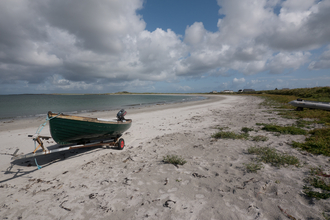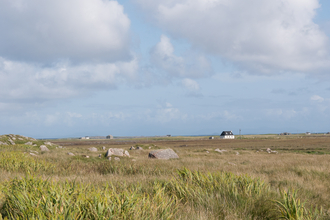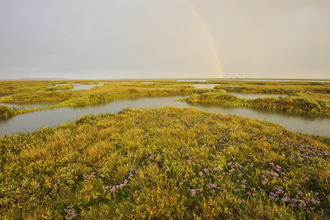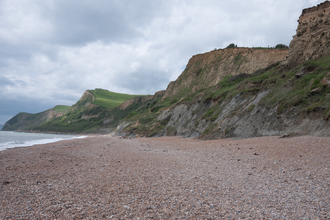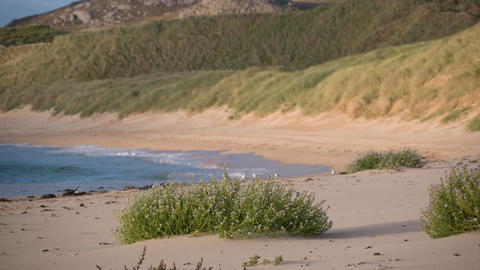
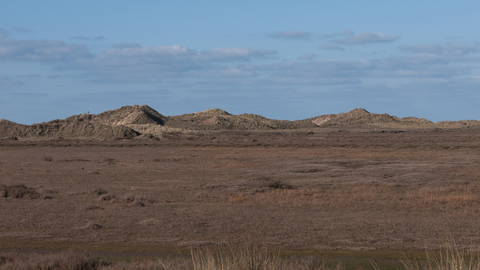
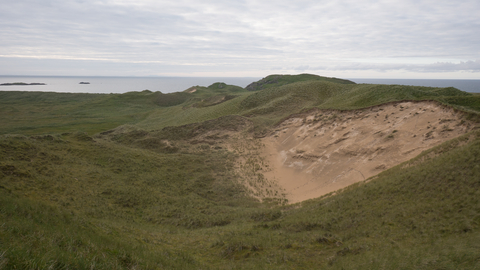
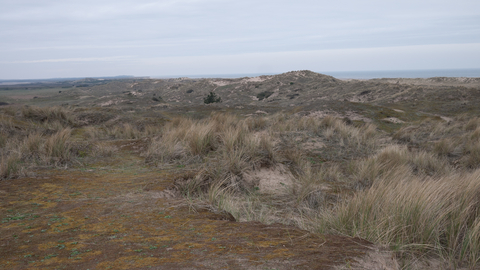
Sand dunes
Beth yw o?
A sand dune is a hill or ridge beyond the reach of the tides, formed from sand over many years. They are ever-changing structures. Dunes usually form in bands parallel to the beach, getting taller and more chaotic the further away you get.
Traveling further from the beach towards the back of the dunes the vegetation starts to change. Over time, the whole system grows while shifting closer to the sea, and if you look at the dunes, you can see each ridge going through the different vegetation phases in turn.
Dune systems can also shrink as a consequence of storm events, rising sea levels or an interruption to the supply of sand.
Dosbarthiad yn y DU
Sand dunes occur widely around the coastline of the UK, with particularly large areas in the Hebrides and fewer along the south coast.
Cadwraeth
Some individual dunes may be just a few years old, while the oldest dune systems date back 9000 years, but old or young, all dunes are naturally dynamic, presenting conservation challenges in a landscape where little space is allowed for mobile habitats. Hemmed in by golf courses, farmland, and development, and affected by hard sea defences that change the availability of new sand, dunes systems can become fossilised. The natural processes that create sand dunes are interrupted, meaning that species are lost.
Climate change presents a significant challenge, as many dunes systems lack the space to roll inland as sea levels rise. Recreational pressure can be an issue – strandline and foredune species are particularly vulnerable to trampling, and damage to these affect the future development of the dune system.
Dynamic Dunescapes is an ambitious project, rejuvenating some of England and Wales' most important sand dunes for people, communities and wildlife.
How do they form?
Dunes are formed from sand blown inland from the beach by onshore winds, and trapped by debris or plants. Accumulating sand makes a good habitat for tough beach grasses such as sand couch and lyme grass, whose strong horizontal roots stabilise the collected sand, encouraging more to settle. Soon, these grasses are completely engulfed by the sand, and are replaced by fast-growing marram grass that keeps pace with the accumulating sand.
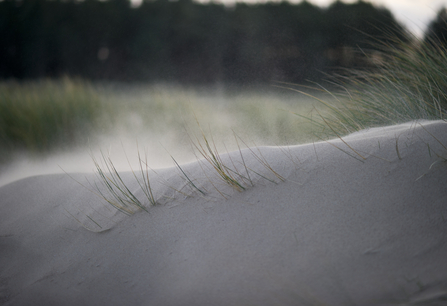
David Tipling/2020VISION
Eventually, as new pockets of sand begin collecting and the salinity of the dune reduces. The dune surface then begins to stabilise and finer grasses, herbs and lichens can grow. As the plants decompose they add some nutrients to the dunes, but much of this is lost due to rain, making conditions suitable for acid-loving plants like heather.
In places, the wind can push the sand away to form a hollow and, if this meets water, dune slacks can develop and may support particularly rich wetland vegetation. Although usually found on flat coastlines, sand dunes can also be found “climbing” cliffs where onshore winds are strong.
What to look for
Typically, dune systems made of lime-rich shell sand promote the widest range of plants. In the summer, fixed dunes are dotted with clovers, lady’s bedstraw, pyramidal orchid, kidney vetch and carline thistle. Prickly saltwort, sea rocket, oraches or sea sandwort growing along the strandline are good indicators of a healthy sand dune system.
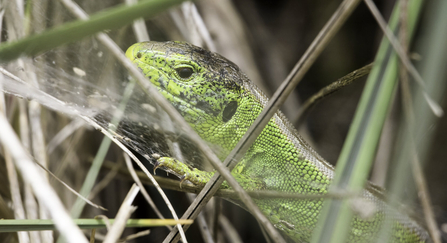
Sand lizard by Chris Lawrence
Dunes can warm up quickly and sheltered areas may be good for invertebrates – look for bumblebees and little piles of sand left by burrowing bees and digger wasps. Warm, open areas can also be good for reptiles; lizards often leave distinctive tracks across looser sand.

